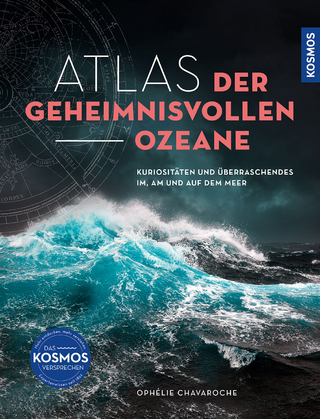
Hybrid models for Hydrological Forecasting: integration of data-driven and conceptual modelling techniques
CRC Press (Verlag)
978-1-138-43400-4 (ISBN)
This book presents the investigation of possibilities and different architectures of integrating hydrological knowledge and conceptual models with data-driven models for the purpose of hydrological flow forecasting. Models resulting from such integration are referred to as hybrid models. The book addresses the following specific topics: A classification of different hybrid modelling approaches in the context of flow forecasting.The methodological development and application of modular models based on clustering and baseflow empirical formulations.The integration of hydrological conceptual models with neural network error corrector models and the use of committee models for daily streamflow forecasting.The application of modular modelling and fuzzy committee models to the problem of downscaling weather information for hydrological forecasting.
The results of this research show the increased forecasting accuracy when modular models, which integrate conceptual and data-driven models, are considered. Committee machine modelling show to be able to manage increased lead time with an acceptable accuracy.
Gerald Corzo received his degree of civil engineering from the Escuela Colombian de Ingenieria, Faculty of Engineering (Bogotá, Colombia). He joined the Universidad Francisco de Paula Santander (UFPS), as a lecturer in Mathematics and Statistics (2000-2003). After graduating with the highest degree in his course he moved to Bogotá and served as lecturer in different universities. In October 2003 he moved to Delft in the Netherlands, there he joined the Hydroinformatics Master program at the UNESCO-IHE Institute for Water Education. He was awarded Master of Science in May 2005. His work explored the use of rule-based modelling and Committee of data-driven models in hydrological forecasting. In his thesis he showed a modular scheme approaching the incorporation of hydrological knowledge in a committee model. He continued with his work in the Phd, where he extended the analysis of artificial intelligence methods applied to hydrological phenomena.
Summary 1 Introduction 11.1 Background 1.2 Flood management and forecasting 1.3 Hydrological models 1.4 Data-driven models 1.5 Objectives of the research 1.6 Terminology 1.7 Outline 2 Framework for hybrid modeling 2.1 Introduction 2.2 General considerations and assumptions 2.3 Hybrid modelling framework 2.4 Committee machines and modular models 2.5 Measuring model performance 2.6 Discussion and conclusions 3 Optimal modularization of data-driven models 3.1 Introduction 3.2 Methodology of modular modelling 3.3 Modularization using clustering (MM1) 3.4 Modularization using sub-process identification (MM2) 3.5 Modularization using time-based partitioning (MM3) 3.6 Modularization using spatial-based partitioning 3.7 Optimal combination of modularization schemes 3.8 Conclusions 4 Building data-driven hydrological models: data issues 4.1 Introduction 4.2 Case study (Our the river basin - Belgium) 4.3 Procedure of data-driven modelling 4.4 Preparing data and building a model 4.5 The problem of input variables selection 4.5.2 Selection based on Average Mutual Information (AMI) 4.6 Influence of data partitioning 4.7 Influence of ANN weight initialization 4.8 Various measures of model error 4.9 Comparing the various types of models 4.10 Discussion and conclusions 5 Time and process based modularization 5.1 Introduction 5.2 Catchment descriptions 5.3 Input variable selection 5.4 Comparison to benchmark models 5.5 Modelling process 5.6 Results and discussion 5.7 Conclusions 6 Spatial-based hybrid modelling 6.1 Introduction 6.2 HBV-M model for Meuse river basin 6.3 Methodology 6.4 Application of Scheme 1 6.5 Application of Scheme 2 6.6 Discussion 6.7 Conclusions 7 Hybrid parallel and sequential models 7.1 Introduction 7.2 Metodology and models setup 7.3 Data assimilation (error correction) 7.4 Committee and ensemble models 7.5 Forecasting scenario 7.6 Results and discussion 7.6.1 Single forecast results 7.6.2 Results on multi step forecast 7.7 Conclusions 8 Downscaling with modular models 8.1 Introduction 8.2 Fuzzy committee 8.3 Case study: Beles River Basin, Ethiopia 8.4 Beles River Basin 8.5 Methodology 8.6 Results 8.7 Conclusions 9 Conclusions and Recommendations 9.1 Hybrid modelling 9.2 Modular modelling 9.3 Downscaling with modular models 9.4 Parallel and serial modelling architectures 9.5 Data-driven modelling .9.6 Conclusion in brief
| Erscheinungsdatum | 07.08.2017 |
|---|---|
| Verlagsort | London |
| Sprache | englisch |
| Maße | 174 x 246 mm |
| Gewicht | 453 g |
| Themenwelt | Naturwissenschaften ► Geowissenschaften ► Hydrologie / Ozeanografie |
| Technik ► Umwelttechnik / Biotechnologie | |
| ISBN-10 | 1-138-43400-0 / 1138434000 |
| ISBN-13 | 978-1-138-43400-4 / 9781138434004 |
| Zustand | Neuware |
| Haben Sie eine Frage zum Produkt? |
aus dem Bereich


